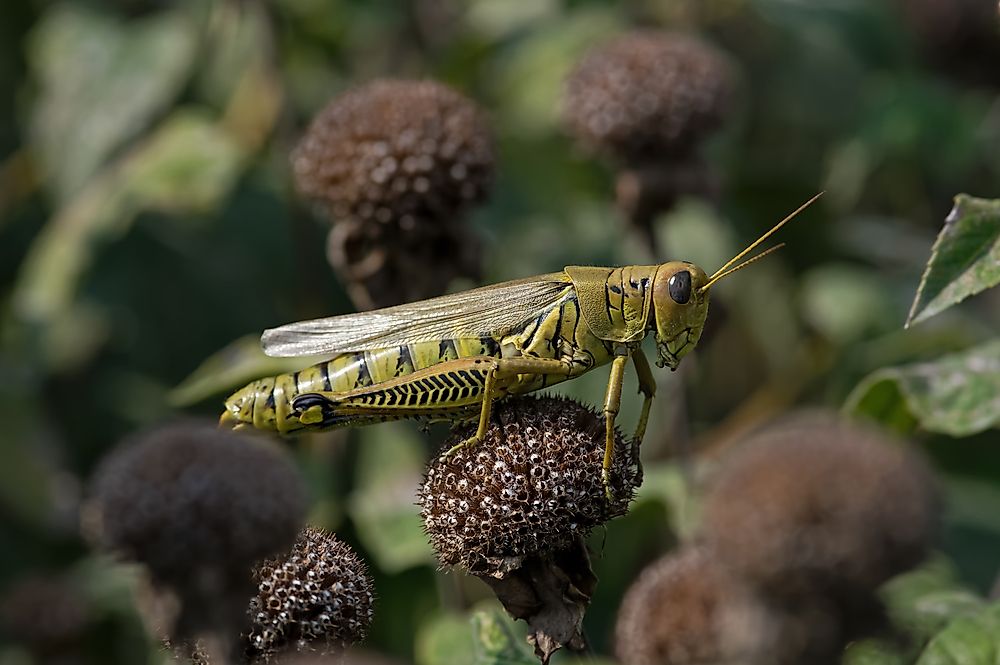What Kind of Animals are Orthoptera?

Orthoptera is an order of insects that exhibit considerable morphological, physiological, and paleontological diversity. The name “Orthoptera” is derived from two Greek words, “orthos” meaning straight and “pteron” meaning wings. The order is subdivided into Caelifera and Ensifera. Caelifera includes insects such as grasshoppers and locust while Ensifera includes crickets. There are over 20,000 species of Orthoptera worldwide. The insects in the order of Orthoptera stridulate and have an incomplete metamorphosis. The stridulation process involves rubbing of wings or legs against each other. Orthoptera is common in the tropical regions throughout the world. Some of the insects belonging to this order can be harmful to agriculture or are considered as pests.
General Characteristics
Orthoptera is generally unusual in appearance, characteristically large, and exhibit peculiar behaviors. They have a cylindrical body with the body size ranging from a few millimeters to almost 30 centimeters. The Orthoptera have elongated and emasculated hindlegs for easy jumping. Their mouths have mandibles for biting and chewing. The compound eyes are large with some of the species’ eyes possessing ocelli. They also have antennae which have several joints with variable length. The thoraxes of Orthoptera have segments with the first and the third segments larger than the second segment. They possess two pairs of wings overlapping the abdomen at rest. The tegmina, which are the forewing, are narrower than the hindwings. The hindwings are membranous and have several veins straight and cross veins.
Life Cycle
Orthoptera undergoes incomplete or simple metamorphosis. A typical Orthoptera undergoes three development stages including egg, nymph, and adult. Eggs are often deposited outside the body on a vegetation or ground. The eggs hatch into a young nymph that resembles a developed insect but lack wings, reproductive organs, and are smaller in size. The nymphs may also exhibit different coloration from the adult. Through successive molting, the nymphs develop wings until the final molting into an adult. The stages of nymphal development from the intermediate molt to adulthood range from 4 to 13 and vary from species to species. The development into adulthood may take a few weeks to months, depending on the species, habitat, and availability of food. The lifespan of Orthoptera depends on the species type, weather conditions, and availability of food. An adult Orthoptera may live for at least two months.
Reproduction
Female Orthoptera has ovaries where eggs develop. As the eggs ripen, they move into an oviduct where they are fertilized by the sperm. The male has two pairs of testes which produce a high amount of sperm. Orthoptera is known to show courtship behaviors before the actual mating. Some female insects secrete chemicals known as pheromones that influence the courtship behavior. Upon detection of the chemical odor, the male initiates the search for the female. Once the female is found the male will protrudes its posterior abdominal segment and hooks its genitals on the female and expel the spermatozoa. The entire process of mating lasts about one hour.
Relationship with Humans
Several Orthoptera species are destructive and are therefore considered pests. They destroy crops while seeking for food. Examples of destructive Orthoptera include grasshoppers and locust. In several instances, locusts are capable of clearing a field of crops within a day. Some of the insects are also edible in some cultures around the world while some are important sources of alternative biofuel.











